Distressed craft foam is a fascinating and innovative crafting material that has transformed the world of DIY and artistic expression.
This specialized craft foam undergoes intentional alteration to mimic the appearance of aged, worn, or textured surfaces.
Crafted from lightweight, flexible expanded polyethylene (EPE), it serves as a versatile canvas for artistic endeavors.
Crafters use a myriad of techniques such as tearing, crumpling, sanding, heating, and painting to achieve the desired distressed effect, unlocking a realm of creative possibilities.
This unique material is prized for its ability to add texture, depth, and character to various projects, from mixed media art to scrapbooking, offering artisans of all levels a versatile and cost-effective medium for their imaginative pursuits.
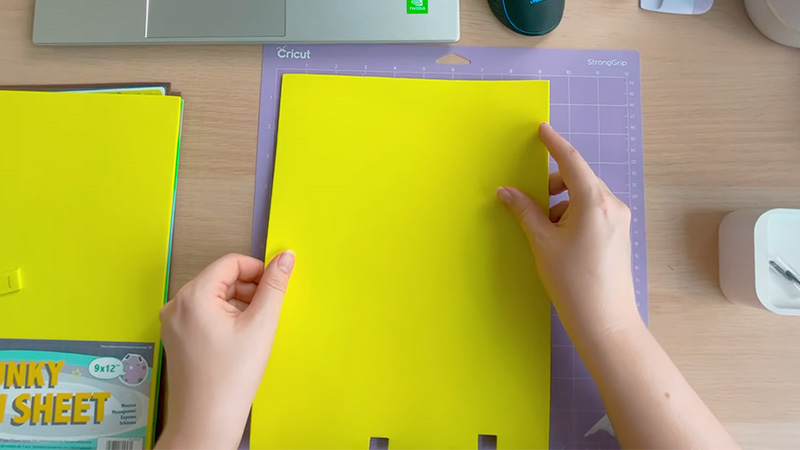
What Is Distressed Craft Foam?
Distressed craft foam, as the name suggests, is a type of craft foam that has been intentionally distressed or altered to mimic the appearance of aged, weathered, or textured surfaces.
Craft foam itself is a lightweight, flexible, and easy-to-cut material, typically made from expanded polyethylene (EPE) or similar foam materials. It is widely used in various craft projects due to its versatility and affordability.
To create distressed craft foam, crafters manipulate the surface of the foam sheet using various techniques and tools to achieve a distressed or weathered appearance.
These techniques can include tearing, crumpling, sanding, heating, painting, and more, depending on the desired effect.
How to Cut Craft Foam Sheets?
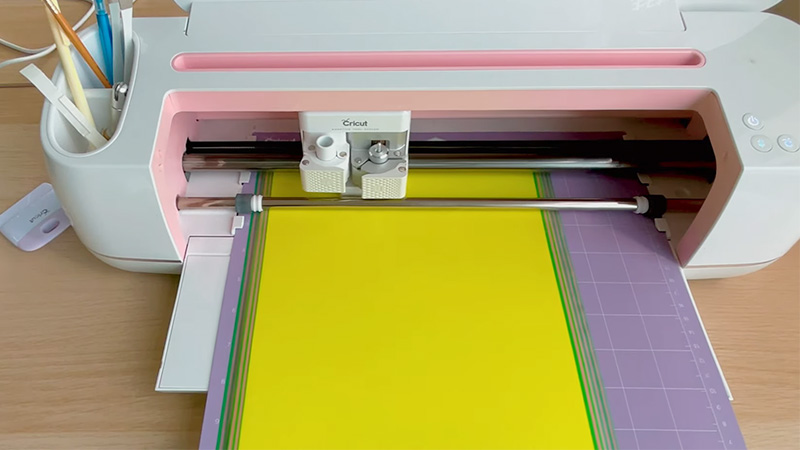
Cutting craft foam sheets is a straightforward process, and there are several methods you can use depending on your project and the precision required.
Here’s a step-by-step guide on how to cut craft foam sheets:
Tools and Materials:
- Craft foam sheet
- Cutting mat
- Craft knife or utility knife
- Scissors
- Ruler or straightedge
- Pencil or pen
Method 1: Using Scissors
- Prepare Your Workspace: Lay your craft foam sheet on a clean and flat surface, such as a cutting mat or a table covered with a protective layer.
- Mark Your Cutting Lines: Use a ruler or straightedge to mark the cutting lines on the foam sheet. You can use a pencil or pen to make these marks, but make sure to mark lightly to avoid visible lines on the foam.
- Cut Along the Lines: Hold the foam sheet firmly and carefully cut along the marked lines with a pair of sharp scissors. Make smooth, even cuts for the best results.
- Finishing Touches: After cutting, you may notice rough edges. You can gently sand these edges with fine-grit sandpaper or an emery board to smooth them out.
Method 2: Using a Craft Knife
- Prepare Your Workspace: As with the scissor method, start by laying the craft foam sheet on a cutting mat or a protected surface.
- Mark Your Cutting Lines: Use a ruler or straightedge to mark the cutting lines on the foam sheet. Again, use a pencil or pen to make light marks.
- Cut with a Craft Knife: a. Hold the ruler or straightedge firmly along the marked line to guide your craft knife. b. With your craft knife, carefully cut along the marked line. Apply gentle and even pressure to avoid tearing or jagged edges. c. For curved or intricate cuts, you can use a smaller, precision craft knife or a hobby blade.
- Finishing Touches: If needed, you can lightly sand the cut edges with fine-grit sandpaper or an emery board to smooth any rough spots.
Uses of Distressed Craft Foam
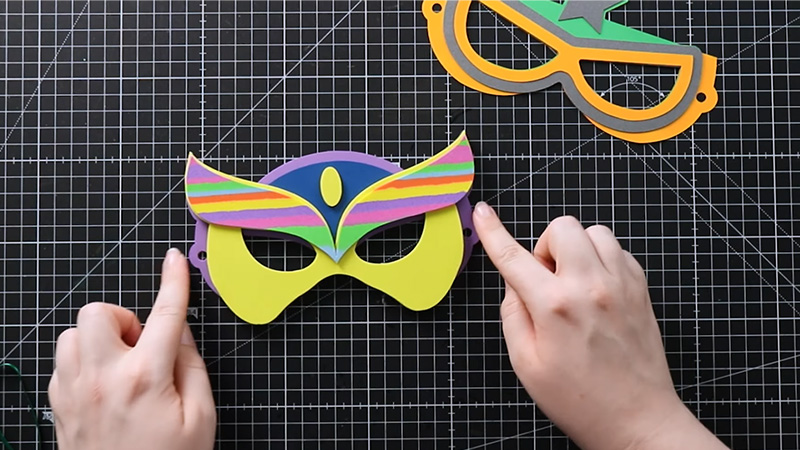
Distressed craft foam, with its textured and weathered appearance, is a versatile material that can be used in a wide range of craft projects. Its unique aesthetic adds character and depth to creations.
Here are some common uses for distressed craft foam:
Mixed Media Art
Distressed craft foam is a favorite among mixed media artists. It can be incorporated into paintings, collages, and sculptures to add texture and dimension.
Its distressed look complements other materials like canvas, paper, and metal, creating visually striking compositions.
Scrapbooking
Craft foam sheets can be cut into various shapes and sizes, perfect for embellishing scrapbook pages. The distressed texture adds a vintage or shabby chic vibe to layouts, enhancing the overall design.
Cardmaking
Distressed craft foam is a great addition to handmade greeting cards. Crafters can create textured backgrounds, die-cut embellishments, or layer distressed foam for a unique and tactile card design.
Home Decor
Craft foam can be used to make decorative items for your home. You can create faux aged signs, wall art, or decorative panels that mimic the appearance of weathered wood or antique metal. These pieces can add character to any room.
Costume and Prop Making
The lightweight nature of craft foam makes it ideal for crafting costume accessories and props.
You can distress the foam to create armor, weapon props, and costume details for cosplay or theatrical productions.
Journal and Planner Covers
Distressed craft foam can be used to craft covers for journals, planners, or notebooks. The textured surface adds a tactile element to these items, making them visually appealing and unique.
Embellishments
Cut distressed craft foam into various shapes like flowers, leaves, or tags. These can be used as embellishments for a wide range of projects, from handmade gifts to DIY jewelry.
Miniature Dioramas
Craft foam can be shaped and distressed to resemble miniature bricks, stones, or other architectural elements for dioramas, dollhouses, and model-making projects.
Kids’ Crafts
Distressed craft foam is a kid-friendly material, and children can use it for art projects and school assignments. Its soft texture and ease of cutting make it safe and enjoyable for young crafters.
Customized Party Decor
Create personalized party decorations such as banners, centerpieces, and cake toppers using distressed craft foam. It can be painted, glued, and shaped to match the theme of your event.
Educational Projects
Teachers and educators can use craft foam in educational activities and projects. Its versatility makes it suitable for creating visuals, interactive displays, and tactile learning aids.
Benefits of Using Distressed Craft Foam
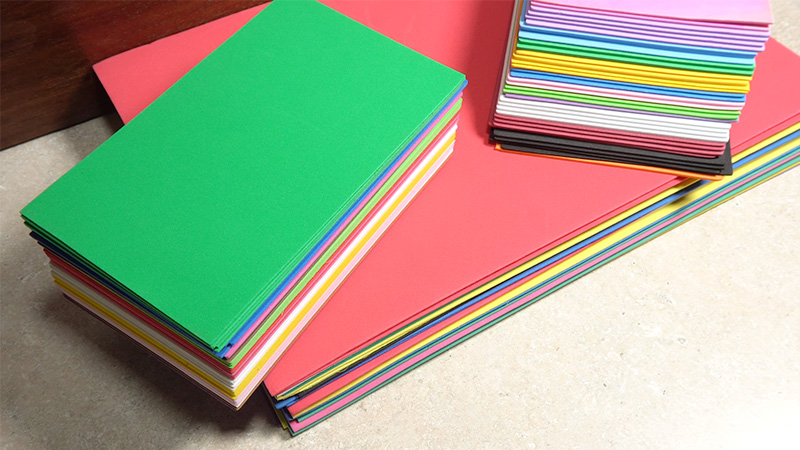
Using distressed craft foam in your creative projects offers various benefits, making it a favored choice among crafters and artists.
Here are some of the key advantages of incorporating distressed craft foam into your crafting endeavors:
Texture and Depth
Distressed craft foam adds an intriguing texture and depth to your creations. Its weathered appearance mimics aged materials such as wood, metal, or stone, giving your projects a rustic or vintage charm.
Versatility
Craft foam is a highly versatile material, and when distressed, it becomes even more adaptable. It can be used in a wide range of crafts, from mixed media art to scrapbooking, costume making, and home decor.
Ease of Manipulation
Craft foam is easy to cut, shape, and manipulate. Whether you’re using scissors, craft knives, or die-cutting machines, it’s a beginner-friendly material that allows for precise and intricate designs.
Lightweight
Distressed craft foam remains lightweight, making it suitable for projects where weight is a concern. This characteristic is particularly advantageous for crafting costume accessories, props, and wearable art.
Affordability
Craft foam is an affordable material, making it a cost-effective choice for crafters on a budget. You can experiment with various distressed techniques without worrying about the cost.
Customization
Crafters have complete control over the level of distressing, coloration, and texture when working with distressed craft foam. This level of customization allows for the creation of unique and personalized designs.
Mixing Media
Distressed craft foam integrates seamlessly with other crafting materials. You can combine it with paper, fabric, metal, paint, and more to achieve multidimensional and visually stunning results in mixed-media projects.
Child-Friendly
Distressed craft foam is safe and suitable for children’s crafts. Its soft texture and ease of cutting make it an excellent choice for art projects in schools or at home.
Durability
Craft foam, even when distressed, retains its durability. It can withstand some wear and tear, making it suitable for long-lasting projects such as costume accessories or home decor items.
Enhanced Aesthetics
The distressed look of craft foam adds character and visual interest to your creations. It can transform ordinary projects into eye-catching works of art with minimal effort.
Easily Obtainable
Craft foam sheets and rolls are widely available in craft stores, making them accessible to crafters of all levels and ensuring a readily available supply for your creative projects.
Tips for Crafting with Distressed Foam Perfectly
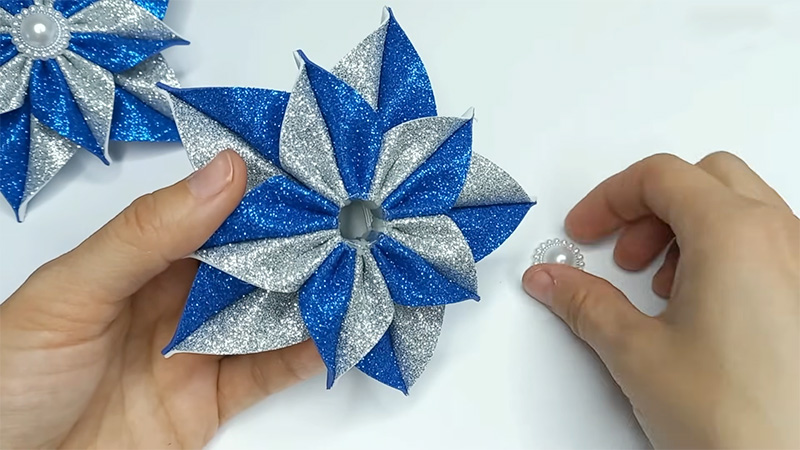
Crafting with distressed foam can be a fun and creative endeavor, but achieving the perfect distressed look can require some practice and attention to detail.
Here are some tips to help you craft with distressed foam more effectively:
Experiment with Distressing Techniques
There are various ways to distress craft foam, including tearing, crumpling, sanding, heating, and painting.
Experiment with different techniques to achieve the desired level of distress and texture for your project.
Practice on Scrap Pieces
Before working on your actual project, practice distressing foam on scrap pieces. This allows you to refine your techniques and get a better understanding of how the foam responds to different methods.
Use the Right Tools
Depending on the distressing technique, you may need specific tools. For example, scissors or craft knives work well for cutting and shaping, while sandpaper or an embossing tool can be used for adding texture.
Be Mindful of Pressure
When tearing or crumpling foam, be mindful of the pressure you apply. Gentle tearing and crumpling can create a subtle distressed effect, while more forceful handling can result in a more dramatic texture.
Layering
Consider layering distressed foam pieces to create depth and dimension in your projects. Gluing or stacking foam layers can add an interesting 3D effect.
Prep the Surface
If you plan to paint or apply other materials to the foam, it’s a good idea to prep the surface first. Lightly sanding the foam can help paint adhere better, ensuring a more even finish.
Choose the Right Adhesive
When attaching distressed foam to other surfaces, use the appropriate adhesive for your project. For paper and cardboard, a craft glue or double-sided tape may work well, while for other materials, consider stronger adhesives like E6000 or hot glue.
Incorporate Realistic Colors
If you’re aiming for a realistic distressed look, choose paint colors that mimic the natural aging of the material you’re trying to replicate.
For instance, use earthy tones for wood-like textures or metallic shades for a weathered metal appearance.
Plan Your Design
Before you begin, have a clear vision of your project’s design. Sketch it out or create a template to guide your distressing and cutting. This helps ensure that your distressed foam pieces fit together seamlessly.
Patience is Key
Distressing foam can be a time-consuming process, especially for intricate or large-scale projects. Take your time and work patiently to achieve the desired results.
Seal and Protect
If your project will be handled frequently or exposed to elements, consider sealing it with a clear varnish or sealer. This can help protect the distressed foam and preserve its appearance.
Clean Tools Regularly
If you’re using tools like scissors or craft knives, clean them regularly to prevent adhesive buildup or foam residue, which can affect their cutting performance.
Can Cricut Cut Foam Sheets?
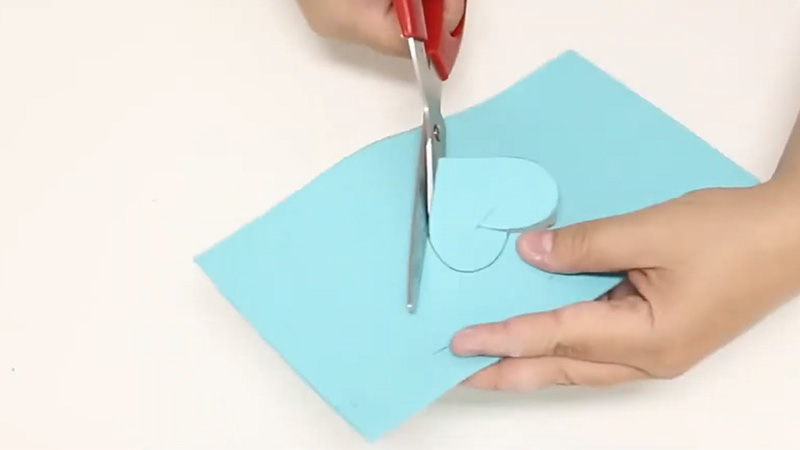
Yes, a Cricut cutting machine can be used to cut foam sheets. However, it’s important to note that not all Cricut machines are created equal, and the thickness and type of foam you can cut may vary depending on the specific model of Cricut you have.
Here are some general guidelines for cutting foam sheets with a Cricut machine:
Choose the Right Cricut Model
Some Cricut machines are more suitable for cutting foam than others. Cricut Explore Air 2, Cricut Maker, and other advanced models are often better equipped for cutting thicker materials like foam compared to older or more basic models.
Use the Appropriate Cutting Mat
When cutting foam sheets with a Cricut, you’ll need the correct cutting mat. For foam, a strong grip or fabric grip mat is typically recommended. The choice of mat depends on the type and thickness of foam you are using.
Select the Right Blade
For foam cutting, you can use a fine-point blade or a deep-point blade depending on the thickness of your foam. A deep-point blade is usually better for thicker foam sheets.
Prepare Your Design
Create or import your design into Cricut Design Space or the software associated with your Cricut machine. Make sure your design fits within the cutting area and is appropriately sized.
Set the Material Type
In Cricut Design Space or the software for your Cricut model, select the material type as “Foam” or a similar option. The software will adjust the cutting settings based on your selection.
Test Cut
Before cutting your actual project, it’s a good practice to perform a test cut on a small piece of foam to ensure that the settings are correct and that your machine can handle the material.
Load the Foam Sheet
Place the foam sheet on the cutting mat, aligning it with the grid lines and ensuring it’s securely adhered to the mat.
Insert the Mat
Insert the mat into your Cricut machine and follow the machine’s prompts to load the mat and begin cutting.
Monitor the Cut
Keep an eye on the cutting process to ensure that the foam is being cut accurately and without any issues.
Remove the Cut Foam
Once the cutting is complete, gently remove the foam sheet from the mat. Be careful when handling the foam, as it can be delicate.
Fine-Tune as Needed
If the cut isn’t perfect, you may need to adjust the settings and repeat the process until you achieve the desired results.
FAQS
What is distressed craft foam?
Distressed craft foam is a type of craft foam that has been intentionally altered to mimic the appearance of aged, weathered, or textured surfaces. It is used in various craft projects to add character and depth.
How is distressed craft foam created?
Distressed craft foam is created through various techniques such as tearing, crumpling, sanding, heating, and painting. Crafters manipulate the foam’s surface to achieve the desired distressed effect.
What can you use distressed craft foam for?
Distressed craft foam is versatile and can be used in mixed media art, scrapbooking, cardmaking, home decor, costume making, and more. It adds texture and visual interest to a wide range of projects.
Is distressed craft foam easy to work with?
Yes, distressed craft foam is relatively easy to work with. It can be cut, shaped, and manipulated using basic crafting tools, making it accessible to crafters of all skill levels.
To Recap
Distressed craft foam is a versatile and innovative material that adds a unique dimension to creative projects.
With its textured, weathered appearance, it brings a rustic or vintage charm to various crafting endeavors.
Whether used in scrapbooking, card making, home decor, or mixed media art, distressed craft foam allows artists and crafters to achieve a distressed, aged look with ease.
Its flexibility, affordability, and compatibility with various crafting tools make it a valuable addition to any craft supply collection.
As a popular choice for DIY enthusiasts, distressed craft foam empowers individuals to explore their artistic potential and breathe new life into their projects through its distinctive aesthetic appeal.
Leave a Reply